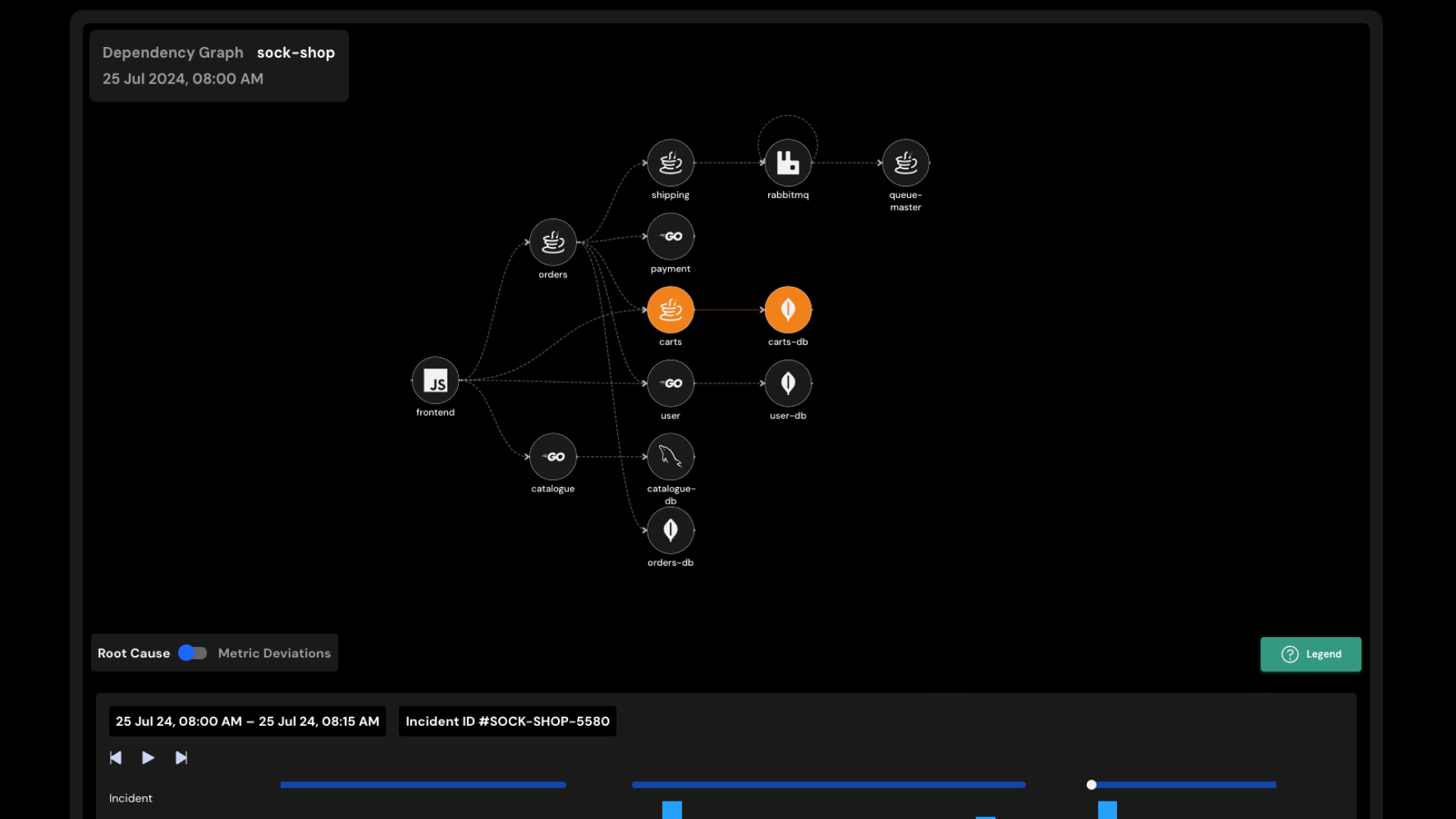- 重要な情報
- はじめに
- 用語集
- Standard Attributes
- ガイド
- インテグレーション
- エージェント
- OpenTelemetry
- 開発者
- Administrator's Guide
- API
- Partners
- DDSQL Reference
- モバイルアプリケーション
- CoScreen
- CoTerm
- Remote Configuration
- Cloudcraft
- アプリ内
- ダッシュボード
- ノートブック
- DDSQL Editor
- Reference Tables
- Sheets
- Watchdog
- アラート設定
- メトリクス
- Bits AI
- Internal Developer Portal
- Error Tracking
- Change Tracking
- Service Management
- Actions & Remediations
- インフラストラクチャー
- Cloudcraft
- Resource Catalog
- ユニバーサル サービス モニタリング
- Hosts
- コンテナ
- Processes
- サーバーレス
- ネットワークモニタリング
- Cloud Cost
- アプリケーションパフォーマンス
- APM
- Continuous Profiler
- データベース モニタリング
- Data Streams Monitoring
- Data Jobs Monitoring
- Data Observability
- Digital Experience
- RUM & セッションリプレイ
- Synthetic モニタリング
- Continuous Testing
- Product Analytics
- Software Delivery
- CI Visibility (CI/CDの可視化)
- CD Visibility
- Deployment Gates
- Test Visibility
- Code Coverage
- Quality Gates
- DORA Metrics
- Feature Flags
- セキュリティ
- セキュリティの概要
- Cloud SIEM
- Code Security
- クラウド セキュリティ マネジメント
- Application Security Management
- Workload Protection
- Sensitive Data Scanner
- AI Observability
- ログ管理
- Observability Pipelines(観測データの制御)
- ログ管理
- CloudPrem
- 管理
CloudAEye
Supported OS
インテグレーションバージョン1.0.0





CloudAEye Kosal Dashboard
Automated Root Cause Analysis
Notifications with Rich Context
Centralized app analysis
Assistant
このページは日本語には対応しておりません。随時翻訳に取り組んでいます。
翻訳に関してご質問やご意見ございましたら、お気軽にご連絡ください。
翻訳に関してご質問やご意見ございましたら、お気軽にご連絡ください。
Overview
Kosal from CloudAEye acts as your root cause copilot. This integration enables Datadog users to import observability data (logs, metrics, traces) and view automated root cause analyses in CloudAEye. Additionally, it identifies similar issues within Jira and related code changes that may be contributing to the incident. To expedite incident identification, Kosal sends events with a summary and root cause to Datadog.
Setup
Pre-installation steps
- Create a CloudAEye account if you do not already have one.
Installation
Log in to your CloudAEye account and add a Datadog Integration.
To integrate your Datadog account with CloudAEye, we require the following details.
Site: The Datadog site where your observability data is located, such as US1-East. Read more about Datadog sites in the documentationAPI Key: A Datadog API key helps CloudAEye uniquely identify the organization. Read more about API keys in the documentation.Application Key: In addition to an API key, CloudAEye needs a Datadog application key to programmatically access your data. Read more about application keys in the documentation.
You can now explore your logs, metrics and traces data in the CloudAEye dashboard.
Notification setup
To get notified about any incident:
- On the CloudAEye integration page, navigate to Settings > Root Cause Analysis from the side navigation drawer.
- Select the Send Alerts checkbox.
- Choose or add the notification alert channel of your choice.
Uninstallation
To remove the Datadog integration from CloudAEye:
- From the side navigation drawer on the CloudAEye integrations page, navigate to Integrations > Datadog.
- Click Remove.
- Click the Uninstall Integration button. Once you uninstall this integration, any previous authorizations are revoked.
- Ensure that all API keys associated with this integration have been disabled by searching for the integration name (CloudAEye) on the API keys management page.
Support
Need help? Contact CloudAEye support.
References
- Follow the step-by-step guide in the CloudAEye docs to set up Datadog integration.
